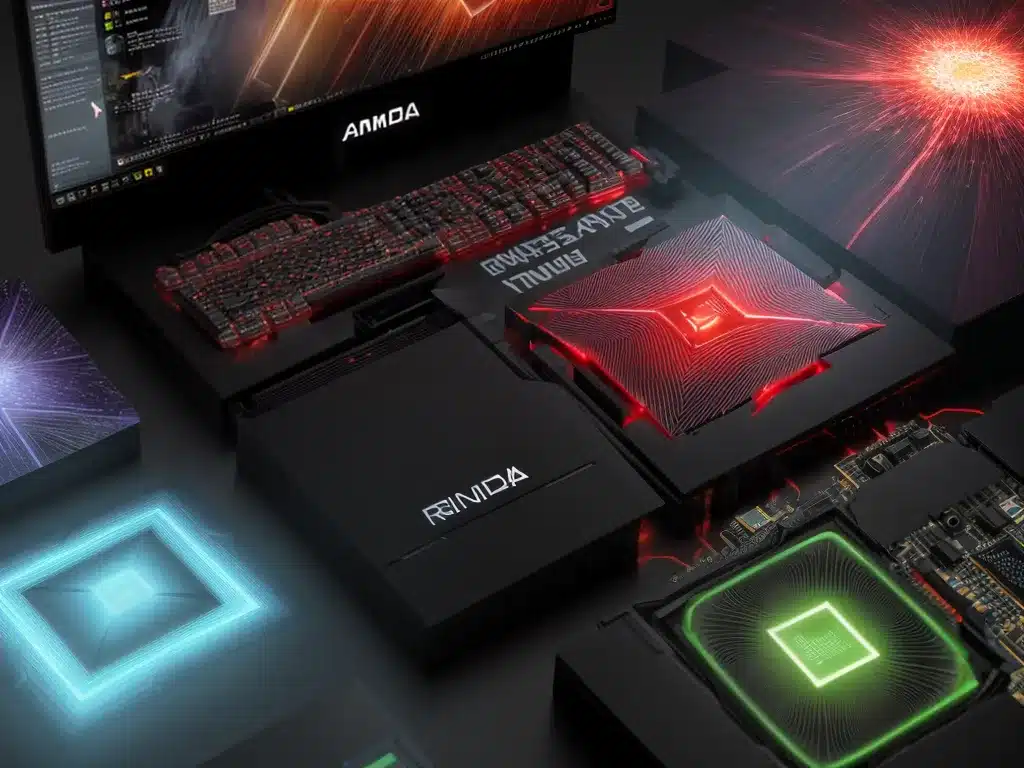
I’m excited to share the latest news about AMD’s upcoming RDNA 4 graphics architecture. As an avid gamer and graphics enthusiast, I can’t wait to see the performance gains RDNA 4 will bring. In this in-depth article, I’ll cover everything we know so far about RDNA 4 and what it means for the future of AMD graphics.
An Overview of AMD’s RDNA Graphics Architectures
AMD’s RDNA graphics architectures represent a new era for the company’s GPU designs. RDNA 1 debuted in 2019 and brought some major improvements in performance per watt compared to older GCN architectures.
RDNA 2 built on that foundation in 2020, delivering even better efficiency and new features like ray tracing acceleration. RDNA 2 powers the latest Radeon gaming graphics cards, as well as the custom APUs inside the PlayStation 5 and Xbox Series X/S consoles.
Now AMD is promising that RDNA 3, expected to launch later in 2022, will bring a 50% increase in performance per watt over RDNA 2. But the company is already hyping what comes after that—RDNA 4.
AMD’s Teases of Massive Performance Gains with RDNA 4
At AMD’s Financial Analyst Day 2022, CEO Dr. Lisa Su stated that RDNA 4 will be a “major architectural transition”. She said it will deliver greater than 50% performance-per-watt gains over RDNA 3, a massive generational leap.
Other AMD executives hinting at RDNA 4 have echoed the same idea. For example, Corporate Vice President of Visual Computing David Wang said RDNA 4 will provide “>2X perf/Watt uplift vs RDNA3”. Going from a 50% boost with RDNA 3 to another doubling with RDNA 4 would be incredible.
Clearly, AMD is planning something big that will set RDNA 4 way ahead of earlier RDNA generations. But what exactly could produce performance improvements on that scale?
Expected Features and Technologies in RDNA 4
To achieve such large performance gains, RDNA 4 will likely leverage multiple cutting-edge graphics technologies:
-
Chiplet design: Building GPUs from smaller chiplets can improve yields and allow mixing and matching different chiplet types. This modular approach has worked well for AMD’s Ryzen CPUs.
-
MCM GPUs: RDNA 4 graphics cards may use a multi-chip module (MCM) design, combining more than one GPU die into a single package like Ryzen Threadripper CPUs. This can provide massive increases in core counts and memory bandwidth.
-
Advanced 5nm or 3nm process: Moving to a smaller transistor process like TSMC’s N5 or the newer N3 node will bring power efficiency improvements. Higher clock speeds may also be possible.
-
Advanced packaging: Packaging methods like 2.5D and 3D stacking will let AMD optimize inter-chip communication latency and bandwidth for better scaling across chiplets.
-
New compute units: Expect redesigned compute units and graphics cores to improve IPC (instructions per clock) performance relative to the RDNA 2 architecture.
-
Machine learning acceleration: Fixed-function hardware for ray tracing and AIinferencing/upscaling could significantly boost gaming performance and visuals. AMD teased this at its 2022 Financial Analyst Day.
What Massive RDNA 4 Performance Could Mean for AMD
If RDNA 4 delivers on AMD’s promises, it will be an exciting product that cements AMD’s position as an industry leader in graphics. Here are some of the potential implications if RDNA 4 performance claims hold true:
-
Leapfrogging NVIDIA: With >2X the perf/watt of RDNA 3, AMD could pull far ahead of NVIDIA’s expected generational improvements from architectures like Ada Lovelace. This could shift the balance of power in the discrete GPU market.
-
Dominating gaming consoles: RDNA 4 or 5 could power the next generation PlayStation and Xbox models with graphics and computing capabilities far beyond the PS5 and Series X. AMD would extend its semi-custom APU wins.
-
Supercharging HPC and AI: Datacenters would benefit greatly from the huge perf/watt advances of RDNA 4 for high performance computing workloads leveraging acceleration features like matrix engines.
-
Revitalizing APUs: Building laptop/desktop APUs with RDNA 4 integrated graphics would massively boost visual capabilities compared to existing RDNA 2 or Vega solutions.
-
Driving new innovations: AMD’s roadmap helps accelerate the graphics industry overall, pushing new technologies into the mainstream at a rapid pace. We all benefit from the competitive advancements!
There are surely many more details left to be revealed about RDNA 4. But if early indications are accurate, AMD’s next-generation architecture could be revolutionary. As an avid gamer, I can’t wait to see RDNA 4 GPUs powering incredible new experiences and gameplay. AMD looks poised to unleash something extraordinary!












